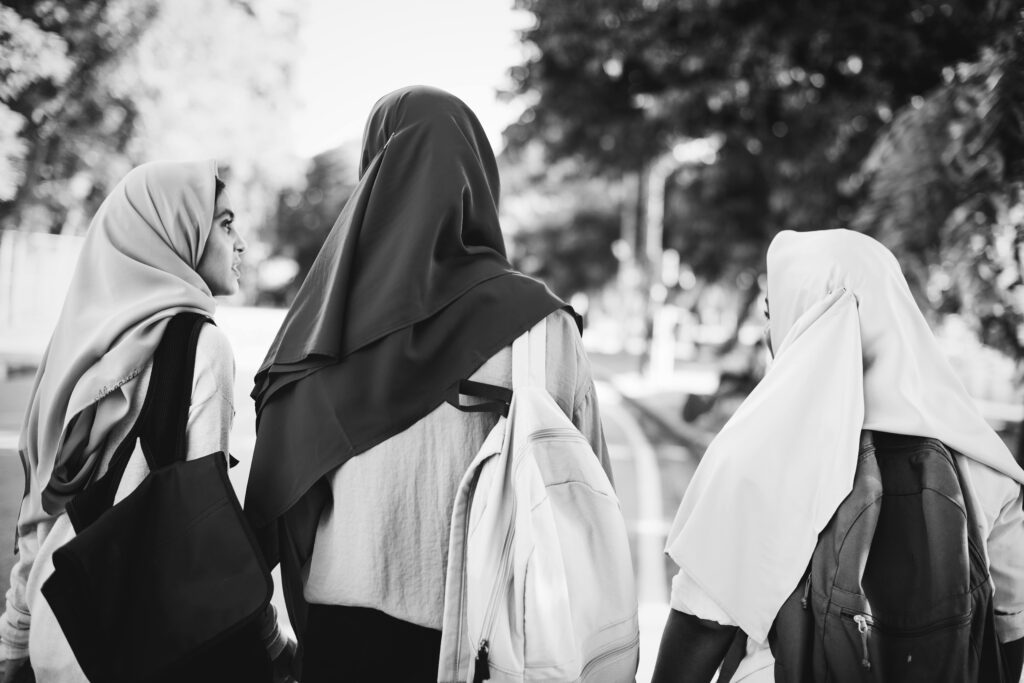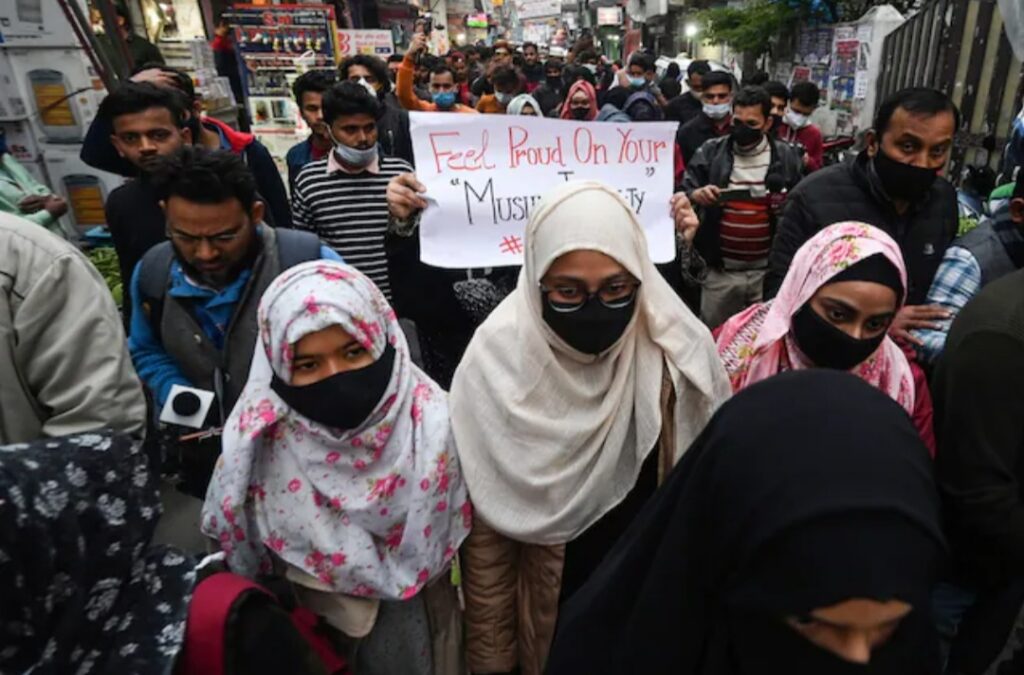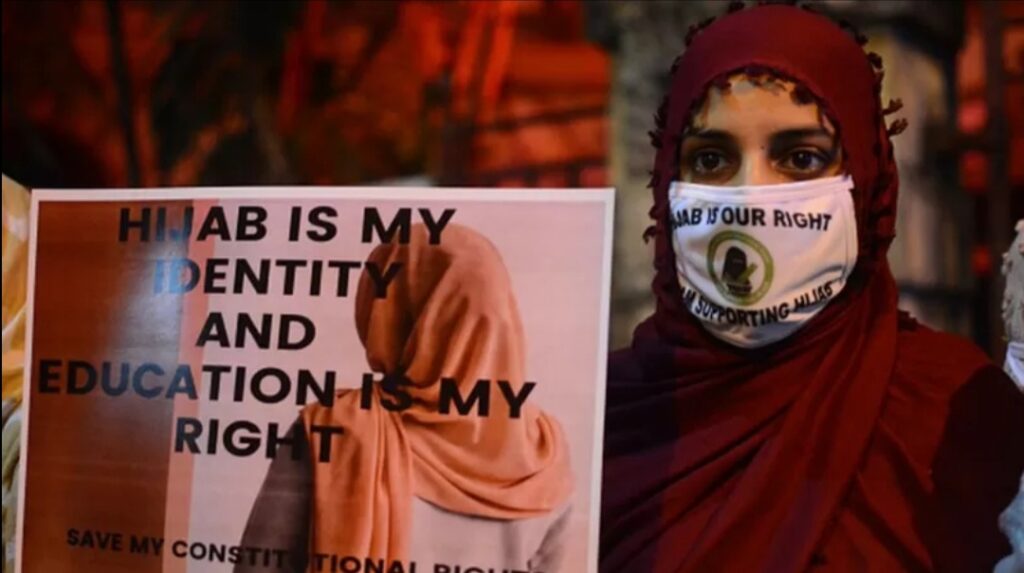India is a culturally diverse country. One can find people belonging to various religions, cultures and states. This uniqueness comes with its fair share of pros and cons.
The cons come in view when religion meets education. The co-existence of unbiased cultural thoughts and education is almost impossible. Elaborating on the very old debate of whether one should allow wearables to promote religion or not, it truly is a threat to the nation’s own future. If such an act is allowed, it will create a gap between students and break their unity. Bullies will increase and there will be a cultural division that will only grow with time.
A child’s mind is the easiest to influence. A uniform was made mandatory to create a sense of ‘”one-ness” among themselves. A student’s education is not just a process, it’s a journey. The outcome or the destination shouldn’t be a thought that provokes religion-based disputes. More importantly, a school uniform acts as one single stage for students from different socio-economic backgrounds whether rich or poor.
But at the same time, the educational system and rules impose threats to religious freedom. School uniforms, as opposed by religious organizations, may cause threats to religious freedom. These organizations may claim that school uniforms violate a student’s religious freedom. Because most religions have specific standards of dressing and grooming, school uniforms mean that most students cannot meet the particular dress and grooming standards of their own religion. Often, because the two principles of dress are in conflict, the student is forced to choose between following the rules of the school and the rules of his religion.
While there may be exceptions to the same rules, this can often create additional problems. In fact, the difference may be even greater — for example, the school uniforms of Muslim students mean that they are the only ones wearing something different, and this can lead to isolation, exploitation, and cultural intolerance.

About the Hijab Dispute
The hijab dispute erupted on January 1 at Udupi College, when six female students said they were not allowed to enter classrooms wearing hijabs.
The hijab line in Karnataka has been going on for over a month, with protests by Muslim and Hindu students. The Karnataka High Court is hearing appeals in this case but has so far asked students to wear a uniform to avoid wearing the hijab, saffron scarves or any other religious attire until the problem is resolved.
The students held a press conference, where they said they wanted permission but the college administration refused to allow them to enter the classroom in a hijab.
They started a protest against the college authorities, which soon became a state issue. Reports of similar protests came from other cities in Karnataka. These protests have since spread to other provinces.
Many videos of the protests have surfaced, showing students of the two communities throwing words at each other. One such video from a college in Mandya shows a Muslim girl standing firm as a bunch of saffron scarves dressed by boys entices her and chants the slogans “Jai Shri Ram” to which she replied: “Allah hu Akbar!”

Institution's Argument
Rudre Gowda, principal of Udupi College, said students used to wear a Hijab when they went to the institution and entered the classroom after removing the scarves.
“The centre did not have a law for people to wear the Hijab as no one has ever worn it in class for 35 years.
The matter goes to court.
Many applications were filed in the Karnataka High Court on January 31 in which Muslim students demanded the right to wear Hijab in classrooms under Sections 14, 19 and 25 of the Indian Constitution. The court heard it for the first time on February 8.
The Court, in its interim petition awaiting consideration of all these complaints, last week banned all students from wearing saffron shawls, scarves, hijab or any other religious flag inside the classroom.

The government's point of view
The Karnataka government has justified the ban on hijabs in classrooms under the Education Act of 1983. A decree dated February 5, it stated that under Section 133 of the Act the government reserves the right to issue appropriate directions to schools and colleges to ensure maintenance of public order.
It also said that in colleges under the Karnataka Board of Pre-University Education, the dress code determined by the College Development Committee or administrative steering committee should be followed. If management does not adjust the dress code, clothing that is not a threat to equality, unity, and order should be worn.
On Thursday, the state government said the hijab line only extends to eight high schools and pre-university colleges of 75,000 such institutions in the province. The government has expressed confidence in resolving the issue.
In an effort to defuse tensions, the Karnataka government temporarily closed schools last week but ordered them to reopen slowly this week.
Current situation
Even after the Court’s interim order, the dispute refused to be resolved as some students insisted they should be allowed to attend classes on ‘hijab’ and ‘burqa’.
Written By: Aanchal Shah
Edited By: Roshni Divecha
